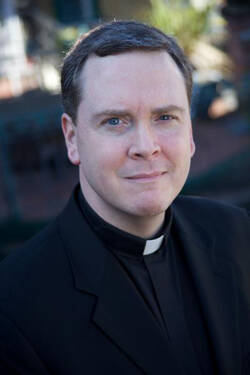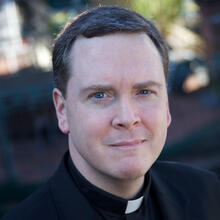I had ventured west of Manhattan’s 10th Avenue in order to attend the Los Angeles Religious Education Congress, a kind of annual lalapalooza of our coreligionists. Over three days, literally thousands of laypeople, media folks, religious, priests and prelates come together to pray, attend talks, visit booths and enjoy the spectacle—if you’ll excuse the pun—of the masses. As the deadline for this then-unfinished column drew dangerously nigh, I was darting down the Pacific Coast Highway en route to Solana Beach, one of a dozen ever-sunny hamlets just north of San Diego. I was on my way to visit a husband and wife who’ve been reading America for—get this—more than 60 years.
Since the job of editor in chief is so demanding, I have precious little time for parish ministry. So I have come to think of America’s readers as my parishioners. Whenever I am traveling, America’s business staff prints out a list of our longtime subscribers and donors in that area, and I try to stop in on some of them as time permits, mainly to thank them for their support and to ask them how we’re doing. I won’t embarrass this particular couple by revealing their names. Suffice it to say, they are typical America readers: intelligent, well-read, faithful and generous. A very enjoyable hour quickly flew by and I was then headed north again, grateful for the hospitality of two new friends.
About 10 minutes north of Solana Beach, I passed Camp Pendleton on my right and then an exit sign marked “Basilone Road.” I recognized the name at once. A native of Raritan, N.J., where he graduated from St. Bernard’s Parochial School, Sgt. John Basilone earned the Congressional Medal of Honor at the Battle of Guadalcanal “for extraordinary heroism and conspicuous gallantry in action against enemy Japanese forces.” He returned home a hero and traveled the country as the national poster boy for the war bonds campaign.
“Manila John” was then assigned the task of training new marines at Camp Pendleton, where he met Sgt. Lena Mae Riggi. Basilone and Riggi quickly fell in love, somehow managing to wrest beauty from the brutality around them. Basilone knew that he would soon return to the fighting; but, he said, “at least I wanted a few days, or weeks if I could get it, to know what it was like to be married. I wanted to be able to say ‘I love you’ a few times and mean it.” John and Lena Mae were married at St. Mary’s Star of the Sea Church near Camp Pendleton in July 1944. Following a quick honeymoon, Sgt. Basilone left for the Pacific theater. During the Battle of Iwo Jima, “in the forefront of the assault at all times,” he was killed by a bursting mortar shell. His actions earned Sgt. Basilone a posthumous Navy Cross. His widow, Lena Mae, who had been Mrs. John Basilone for fewer than seven months, died in 1999. She never remarried and she was still wearing her wedding ring when they buried her.
There are, of course, millions of similarly tragic stories, not just from the global cataclysm that claimed John’s life and Lena Mae’s love, but from the hundreds of other agonizing human catastrophes that filled the most violent century in human history.
Yet a light still shines in the darkness. As John Frankenstein writes in this issue: “Despite, or perhaps because of, this bloody and tumultuous history, the nations of Southeast Asia were compelled to find a way to manage their issues. The aim was...to establish a much-needed zone of peace and neutrality.” Let us pray that such a zone of peace may one day encompass the globe, from the ashen wasteland of Iwo Jima to the freshly-cut grass of Arlington National Cemetery, where an alabaster headstone—one among thousands too many—marks the grave of a kid from Raritan, N.J.








